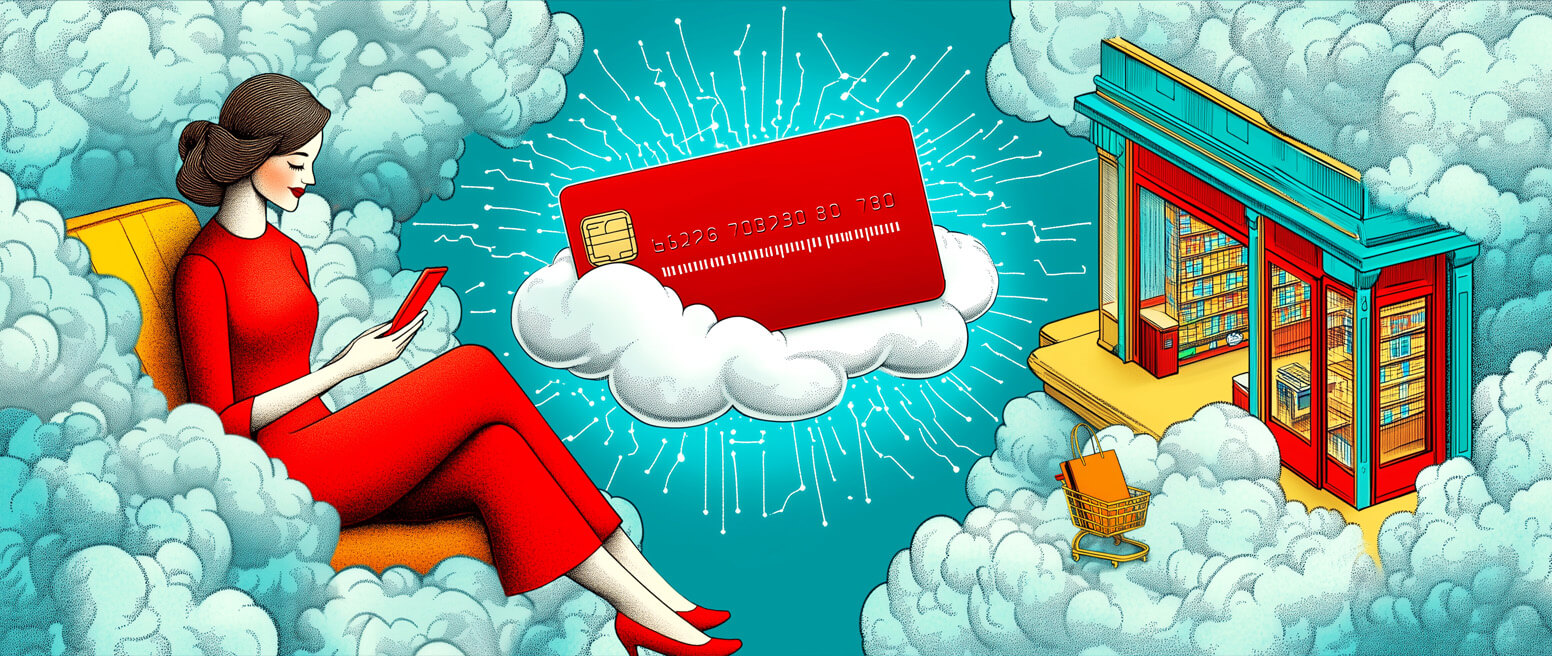The Top 20 Tips to Improve Customer Service & Optimize the Buying Experience
Did you know that it takes 12 positive customer experiences to make up for one negative experience? Or, that the average consumer will tell 15 people when they’ve had a poor customer service experience?
Every business, no matter how successful, probably has some room for improvement in the customer service department. In a lot of cases, it's just minor oversights that are causing disproportionate problems, or support staff who are overwhelmed with other tasks. But, even if improving your customer experience requires an investment of time and money, the benefits will far outweigh the costs.
A bad reputation — deserved or not — will be devastating. More than half of your customers (54%) read reviews before committing to a purchase.
So, how do you clear out bad habits to make room for positive practices? To answer this, we’ve compiled our ultimate list of essential customer service skills to add to your daily operations.
Recommended reading
- Card-Not-Present Transactions: Know the Risks & Rewards
- Top 15 Customer Returns Reasons in 2025 & How to Avoid Them
- Online Shopping vs In-Store Shopping: the Future of Retail?
- eCommerce Personalization: Essential Strategies for 2025
- They’re Here — Cyber Week 2024 Stats & Analysis!
- What is a Return Customer Rate? How to Calculate Your RCR
The Value of Improved Customer Service
Uncovering what drives consumers is big business. Companies invest millions of dollars each year performing case studies, mining and analyzing consumer data, and searching for ways to improve their products and brand reach. improving customer service and giving buyers a better experience is at the core of this research.
You have to prioritize customer service at every stage of the buyer’s journey, from initial browsing through well after checkout. If done well, you’ll see:
- Higher Customer Retention Rates
- More Revenue
- Higher Employee Morale
- Better Reputation
- Fewer Chargebacks
So, now that we understand why customer service is a wise investment for your business, let’s go over how to optimize your customer support skillest.
Customer retention has dropped by 37% since 2016 due to poor customer service. The average American company will lose 23% to 30% of its customers each year due to a lack of customer loyalty.
Our Top 20 Tips to Improve Your Customer Service
Now, we want to start by noting some of these tips might seem like no-brainers at first. You might think “I’m already doing that!”
However, we encourage you to think about the concept. Examine your current practices, and see if you can find ways to optimize and improve on what you're already doing.
We ran through some more general customer service best practices in another recent article. What if you need help improving service now, though? That's where the following 20 tips can really make the difference:
#1 | Be Human
Remember that your customers are people… same as you and your employees. At the end of the day, good customer service is about making human connections between merchants and consumers. Remember the human component, and adopt that as a guiding principle in decision making.
#2 | Be Empathetic
In line with the human element, also remember that the key to that is empathy. By seeking to understand one another, people form strong connections that become the foundation of relationships, both professional and personal. This is powerful stuff that can leave lasting impressions on frequent and prospective customers.
#3 | Communicate Clearly
Effective communication is absolutely essential. Prioritizing your internal and customer-facing communication networks is a wise investment. To that end, internal communication and time management software like Slack, Microsoft Teams, and others can help connect departments more effectively. Better internal communication will enable your team to better serve your customers. Half the challenge of navigating difficult situations is how well your staff communicates with each other and how cohesively they come together when required.
#4 | Be Adaptable
Even though you want to dedicate as much time as possible to solving issues for your customers as they arise, complications are inevitable. You will need to have a codified ruleset and procedures laid out. However, don’t be so locked into those rules that you can’t respond to conditions as they change. Be adaptable and maintain a solid team ethic.
#5 | Get Personal
Customers expect services to be tailored to their specific needs. Your service representatives should leverage historical customer data to provide them with the products and services they actually buy. You can use customer relationship management (CRM) software to accomplish this. When customers reach out, encourage representatives to call the customer by name throughout the conversation and be proactive in appealing to that customer’s preferences.
#6 | Show Gratitude
Although attracting new customers is always a priority, don’t forget about your current customers. Customer retention is more profitable, and ultimately costs a fraction of what you’d spend on acquisition. Discounts and other incentives are a great way to reward loyalty and show appreciation for patronage. A bonus such as free shipping for return buyers, for example, is an excellent way to say “thank you” to customers for their ongoing, continued support.
#7 | Be Available
Since the rise of eCommerce, consumers have become accustomed to multi-channel, round-the-clock shopping. Customer service is no exception. For best results, your customer service system should be available 24/7 across multiple contact channels (phone, email, and social media). This can be achieved through chatbots, self-service directories, FAQs, and automated answering services. Just don’t forget that, at some point, your customers may want to speak with a human being.

#8 | Do the Homework
Data and analysis are keys that unlock many mysteries in eCommerce. The same holds true for customer service. If customers are experiencing a large number of issues with a particular product or service, data can help you identify the issue and resolve it. Accurate data and support analysis can be the difference between informed customer service decisions and illogical actions.
#9 | Make it Easy
Your customers shouldn’t have to climb a mountain to resolve an issue or return an item they didn’t like. Simplifying and streamlining the customer experience wherever possible is an excellent way to optimize your operations. For example, you can try auto-populating fields during checkout, providing quick and easy reordering, offering “no-questions-asked” returns, and providing free return shipping.
If you make it hard for buyers to resolve issues with a purchase, they’ll skip over you and ask their bank to solve the problem. The buyer will request a chargeback, rather than a refund. This will result in chargeback fees and other headaches that you really don’t want.
#10 | Keep Tabs on Buyers
Check in with your customers frequently, and ask them to rate your performance. Pay attention to their preferences, though, especially in regards to their preferred communications. You can give customers the opportunity to decline marketing emails and text messages at their leisure, while also taking note of which products, services, and or marketing promotions most often lead to conversions.
#11 | Pay Attention to the Details
In line with the data recommendations above, every call, email, text, or direct message through social media contains vital data that should be regularly analyzed. With this data in hand, customer service teams are better armed to identify internal issues, diagnose problems, and swiftly and effectively create shortcuts to actionable resolutions.
#12 | Accentuate the Positives
When negative situations do arise, it’s important for customer service staff to remain calm, compassionate, and prepared. Whatever issue comes up, ensure that your customer service reps are empowered to offer positive resolutions to customers at all times. For instance, if a customer is unhappy with a product or service, they could offer a discount on an alternative item, backed by a full refund if still not satisfied. The point is to shift as many negative situations into positive territory as often as possible
#13 | Hire Star Players
Obviously, your customer service staff should be courteous, patient, and as professional as possible. They should know your products and services, inside and out, and know how to respond to frustrated customers with empathy. Nothing will turn a customer off a company faster than curt — or even outright rude — customer service staff.
#14 | Reward Your Team
Customer service teams are the unsung heroes of the business. While rewarding hardworking employees should be a practice for every company, try to remember that customer service teams are on the front lines when there are problems. They’re there to take the heat, often from unhappy customers. Make sure you compensate your agents competitively, let them know they are appreciated, and reward them for exemplary service.
#15 | Be Transparent
Your customer service reps should strive for honesty and transparency on every call. If they can’t answer a query, they should say so and promise to find an answer as quickly as possible. If an error was made on your end, admit it and find a way to remedy the issue. Encourage your people to put themselves in the customer’s position. Instruct them to ask themselves: How would I feel in the given situation?
#16 | Expand Your Skillset
A customer might come to you with a technical question that’s outside your wheelhouse or usual area of expertise. However, responding that you don’t know how to resolve the customer’s question is not an option. You should constantly look for new opportunities to expand your knowledge regarding every facet of your platform. Become an expert in all the technologies and processes you employ, and know how to troubleshoot customers’ issues before they arise.
#17 | Take the Customers’ Side
Always start with the assumption that the customer has a legitimate concern. That won’t always be the case, of course. However, your service representatives should side with the customer until all the evidence is in. Even if the customer is in error, they should be treated respectfully, and not talked down to. Your customers are much more likely to trust you if they feel that you’re their advocate, rather than their antagonist.
#18 | Be Prepared to Be Wrong
Remember: every complaint is the voice of your customers. If your customer service team is reporting recurring complaints with particular products, services, or practices, that’s a sign that you need to take action. This may mean canceling certain promotions, services, or products. While it isn’t great to spend additional resources and time, it’s better to nip problems in the bud and discontinue what isn’t working for you.
#19 | Improve Constantly
Every day is an opportunity to improve your connection with your customers. Regularly scheduled internal audits of each department, particularly customer service, is an excellent habit to get into. Success in business isn’t just determined by what does and does not sell; it’s also reflected in a company’s ethos and internal practices. Your customers are paying attention, which means you should be, too.
#20 | Always Follow Up
Always follow up with your customers, no matter what. Did they ask a question? Make sure to check back and see if it was answered. Did they have a problem that needed to be resolved? Make sure to check back and ask them if it was resolved to their satisfaction. Every contact with a customer (sales, shipping, returns, complaints, etc.) should be followed by a call or email to ensure the shopper is happy… no matter what.
Customer Service Alone Is Not Enough
Ensuring you provide a great customer experience is always a good idea. It is not, however, a complete risk mitigation strategy on its own. Multiple factors may trigger customer complaints and disputes.
Combatting all the potential causes typically adds up to a lot of work. Fortunately, we can help.
Chargebacks911® offers a true end-to-end technology platform that prevents more disputes, wins more reversals, and maximizes your ROI. For more information on how to improve customer service to prevent chargebacks, contact us today.
FAQs
What are customer service best practices?
Customer service best practices cover a wide range of rules and procedures you can adopt to improve customer service. These include personalizing experiences, being transparent, respecting your customer service team, and rapid response, just to name a few.
My customer service is already good. Why do I need to improve it?
Today’s shoppers expect more. They demand quick responses, easy contact, and personalized service. Remember: if you’re not offering the highest levels of customer care, customers will be quick to switch to a competitor who does.
Is there a simple way to improve customer service?
Anything that streamlines the customer experience is good. Go over your policies and procedures from the shopper’s viewpoint: are there trouble spots that you could remedy? Are there more options you can offer? Look for things you can do to make the customer experience easier, faster, and more enjoyable
How can mediocre customer service lead to chargebacks?
Consumers have discovered that filing a dispute with the bank is often a pain-free way of obtaining a refund. If your customer service department is hard to work with, or your return policies are a hassle, customers are that much more likely to turn to the bank at the first sign of a problem.














